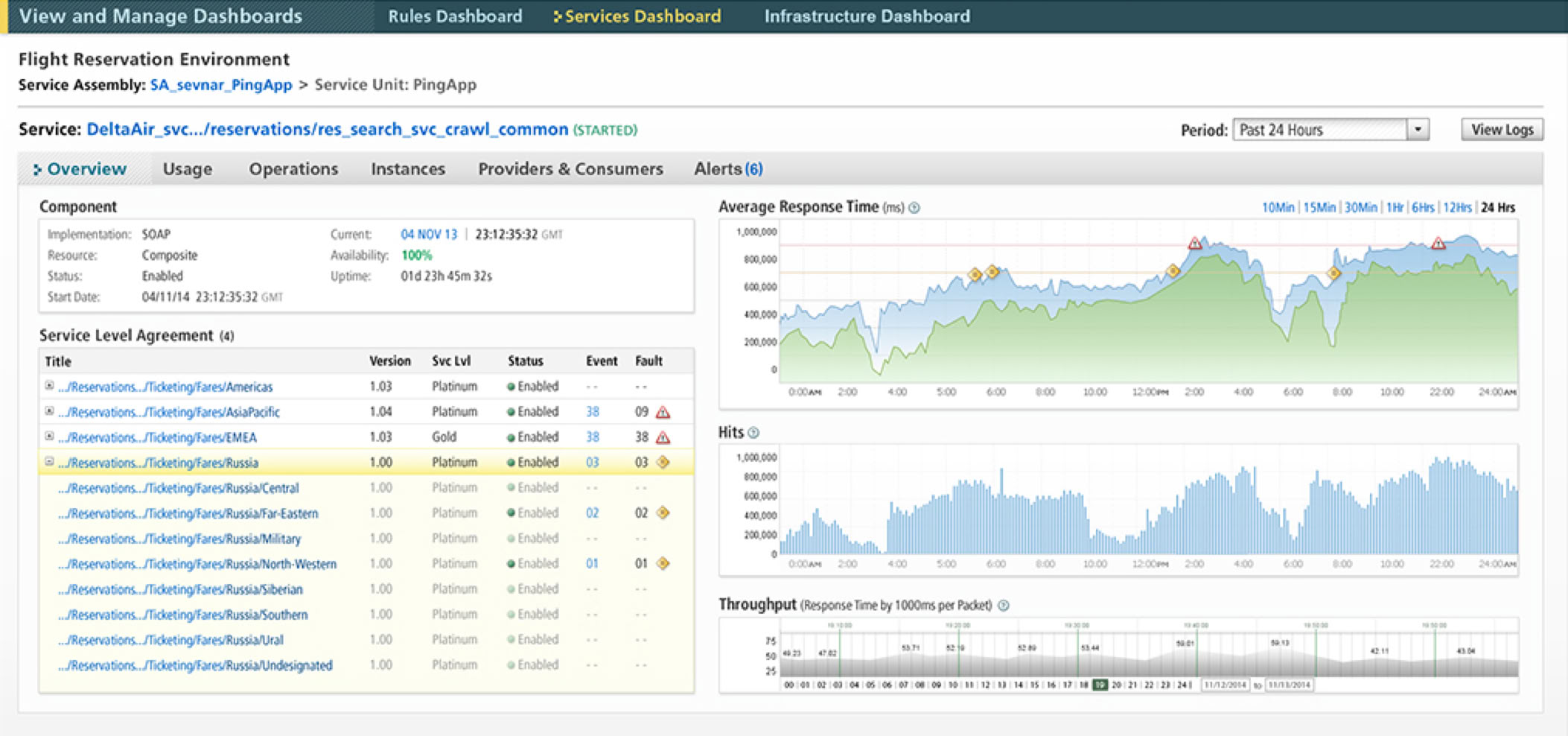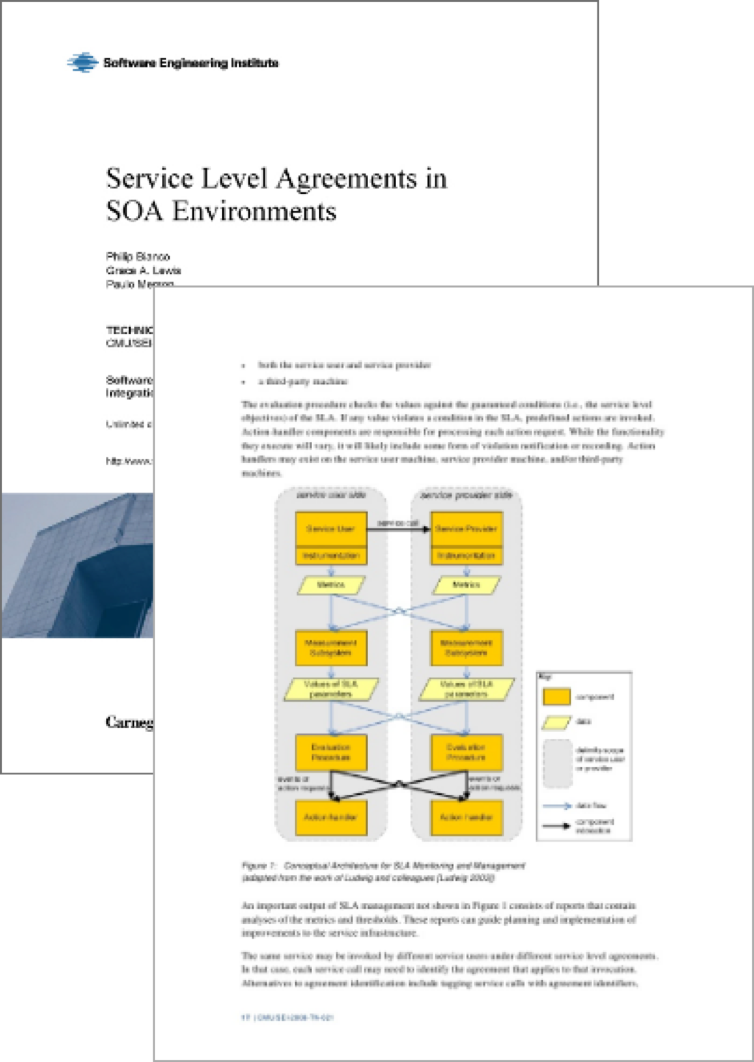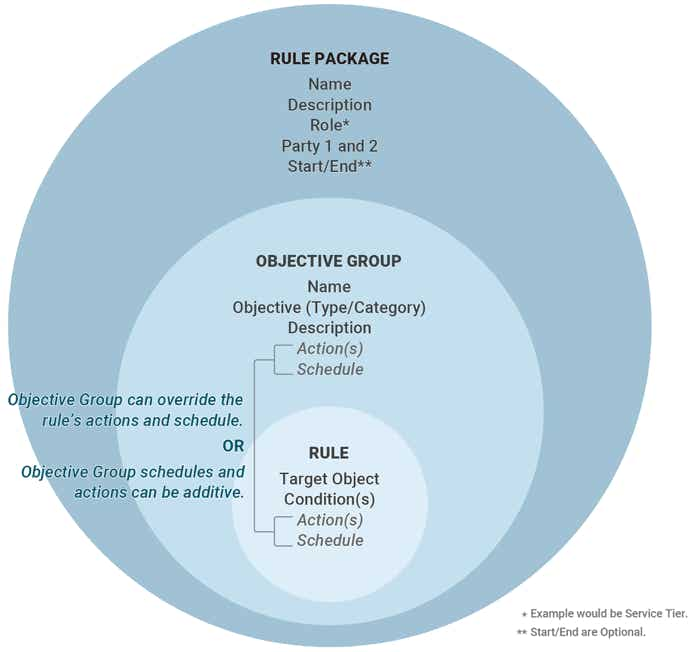TIBCO Software ActiveMatrix

ActiveMatrix is a business intelligence platform that uses machine learning and predictive AI to anticipate and solve customer-related issues before they take place. The system reaches its conclusions through real-time analysis of millions of factors, and potentially decades of data, substantially conceiving reaction scenarios to SLA exceptions or anomalies.
The Challenge
TIBCO and its customers, which include Delta Airlines and Citibank, collectively recognize a lack of fine-grained visibility and control over
their massive infrastructure investments. From DDoS attacks to
resource failures and perceived inefficiencies, customers have business
critical issues that require atomic-level visibility, understanding and
solutions.
Critical Issue Example
Slow-loading or unresponsive applications frustrate end-users, leading
them to abandon Checkout without completing transactions.
Atomic-Level Question
Are different applications or processes competing for the same limited resources (CPU, memory, storage, network), leading to delays and
reduced performance?
To address these and countless other questions, devise methods to
monitor and optimize system infrastructures with the speed and
specificity that autonmous technology provides.
The Solution
A modern enterprise-grade digital process automation platform that automates, executes, and monitors business processes in real-time, independent of human intervention.
The Results
More than 4,000 customers across the globe —including Citibank, Delta Airlines, Yakult and Marks & Spencer— rely on TIBCO ActiveMatrix to
manage information, decisions, processes and applications in real time.
Design Artifacts
In the absence of any documented product goals, strategy or requirements, I held participatory workshops every Tuesday and Thursday with key engineering, marketing, and sales stakeholders and semi-regular guests such as Tibco’s CTO and important customers (e.g., Delta Airlines architects, engineers) to create clarity and achieve consensus: Tuesdays were spent discussing business goals, stakeholder needs, strategy and design; on Thursdays we’d critique and refine the concept models, information architecture, workflows, wireframes, functional specs and prototypes I’d executed in the meantime with the goal of cementing decisions. Artifacts from these sessions, and corresponding patent documentation shown in the galleries below..
The Details: How Do You Develop Such a System?
My initial brief with TIBCO’s Director of Engineering was to outline the project plan as it existed at that point. What I’d expected was a
discussion of a business rationale for the product, product requirements and development roadmap. What I did not was the massive stack of paper he handed me —a spreadsheet listing thousands of services along with corresponding metrics with which to monitor them. My task: convert the speadsheet into a product. Translation: I’d have a much greater responsibility that I’d expected.
The lack of processes, structure and staff left me essentially on my own to figure out how to design a product within an unfamiliar, highly
technical domain whose users I knew nothing about. The spreadsheet
was almost entirely meaningless at that point. My goal would be to
not only design the product, but define it and get it built. The
challenge to stretch beyond a strict design role: this was it.
First Steps
As always, the first step is getting to know use cases and target users. Commandeering a conference room, I began a process of interviewing colleagues, domain experts, and customers with the goal of defining the user landscape and a starting point to uncovering what these users wanted to achieve. Bit by bit, the use cases revealed themselves, and from use cases the functional design.
The other step, in parallel, was learning about system architecture (service assemblies, nodes, containers, EMS and UDDI Servers), who created them, what problems they solved, who was affected by them. To know the user roles and goals, I’d have to understand the day-to-day work the people in these role performed.
Next Steps: Rule Builder
If there was anything obvious about the stack of spreadsheets, it was needing a tool to tie together web services and their metrics. Combined with what I’d been learning about SLAs, Business Rules and Policies it was becoming clearer that, at the very least, there’d have to be a way to assess the health of a system and limit the damage if something ever went wrong.
How it Works
A software system —or, Service Oriented Architecture SOA— is composed of chunks of interconnected code that send and receive data. A bank customer using their iPhone to check interest rates on 30-year loans specific to her personal finance picture.
Crunching these numbers necessitates disparate systems across orgs to transact million of information bits —the federal prime rate, financial holdings, credit score, actuarial tables, property address and crime rate, natural disaster risk— and draw precise conclusions.
Mortgage Product +
= Rate of Interest

Background Reading
Autonomous Optimization Framework

Visual Design Artifacts
The Patent
Patent Application Publication No.: US2010/0083145A1
SERVICE PERFORMANCE MANAGER WITH OBLIGATION-BOUND
SERVICE LEVEL AGREEMENTS AND PATTERNS FOR MITIGATION
AND AUTOPROTECTION
Service Performance Manager (SPM) automatically optimizes resources, services and service level agreements with fine granularity and precision, while remaining steadfastly vendor neutral, allowing it to manage many different applications and SOA platforms simultaneously. SPM allows the user to monitor and manage the performance of individual or grouped services, and provides the visibility in service monitoring from both, technical and business perspectives.

Copyright ©2025 David C. Taylor. All rights reserved.